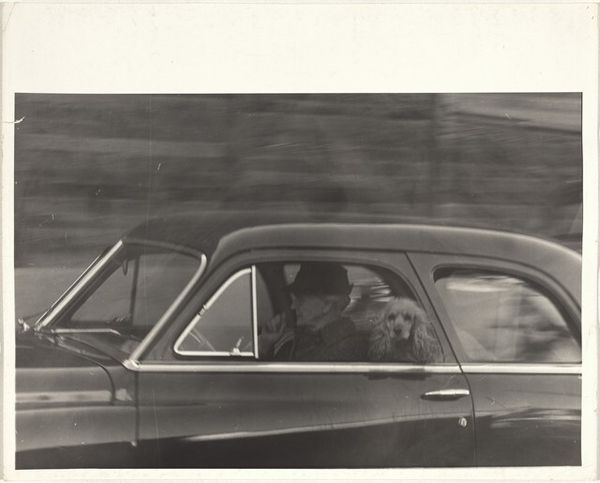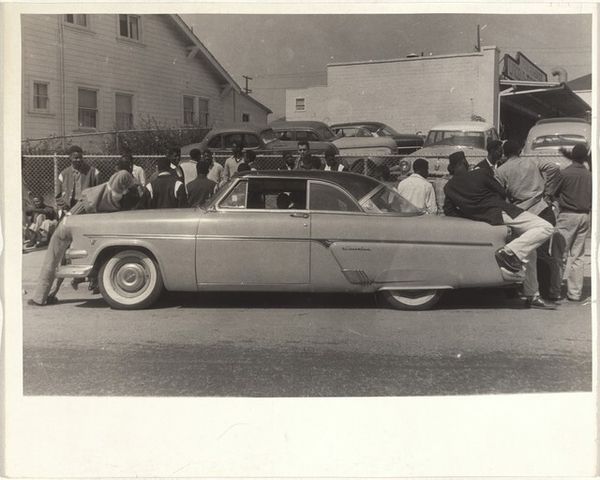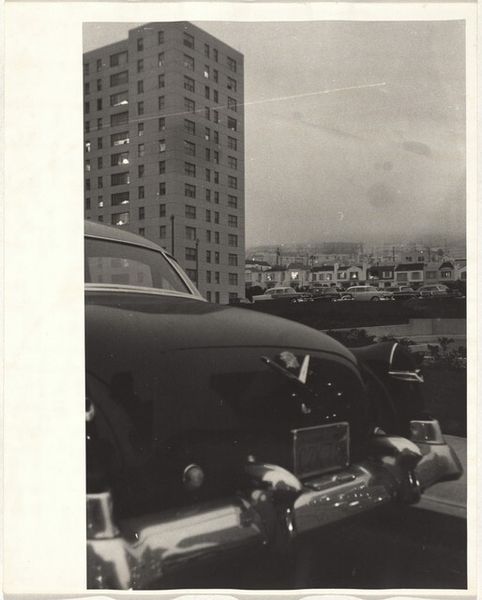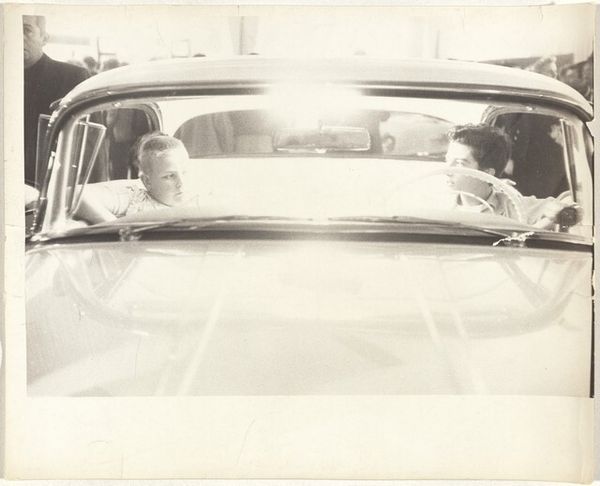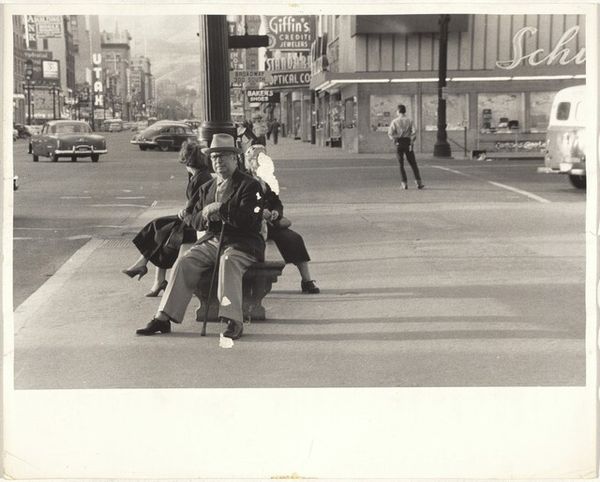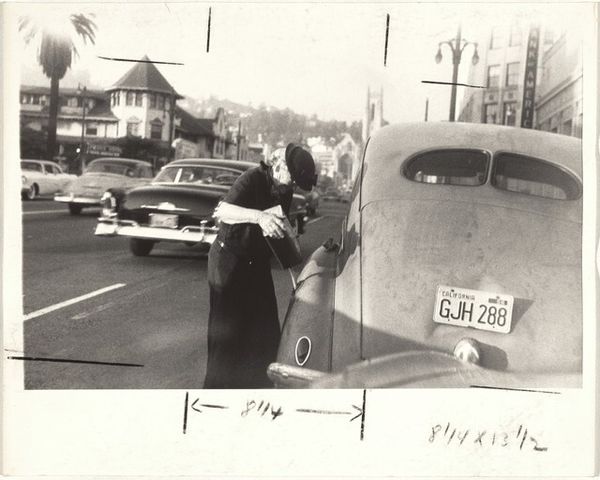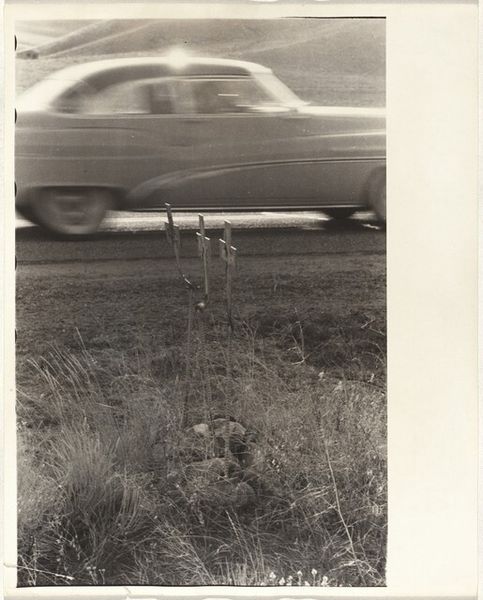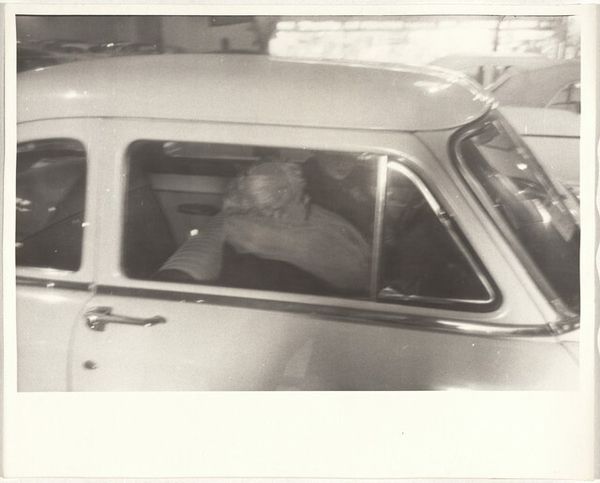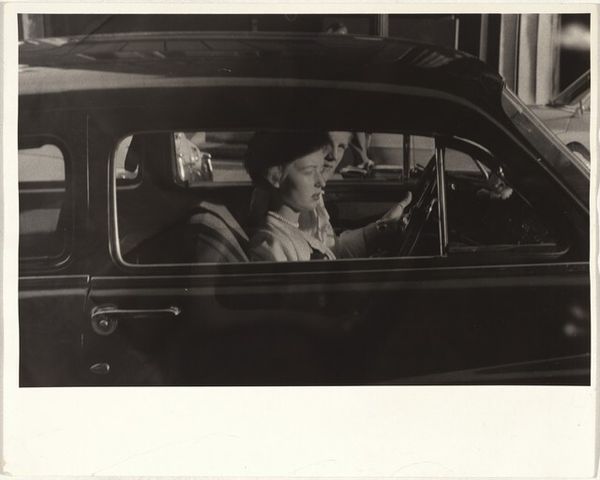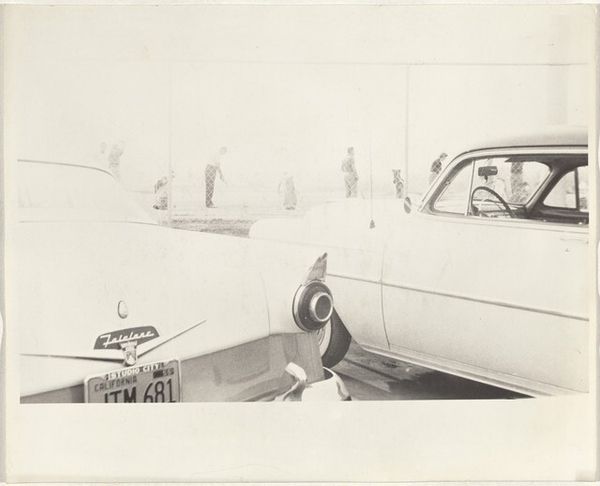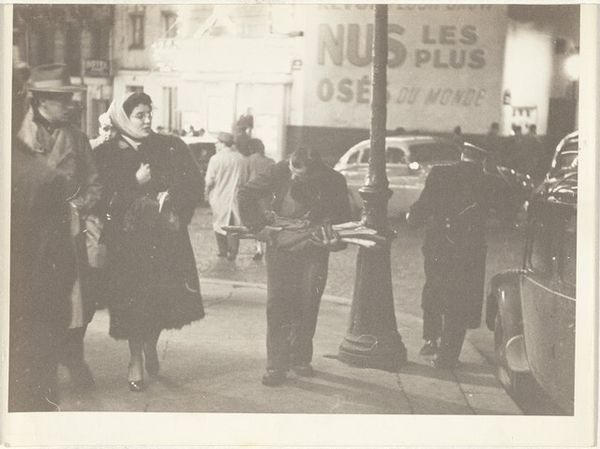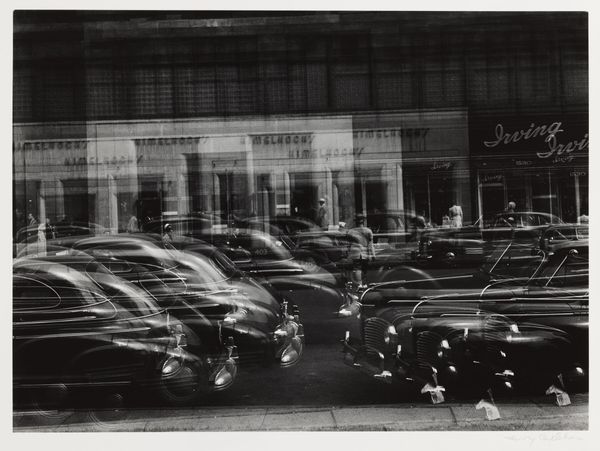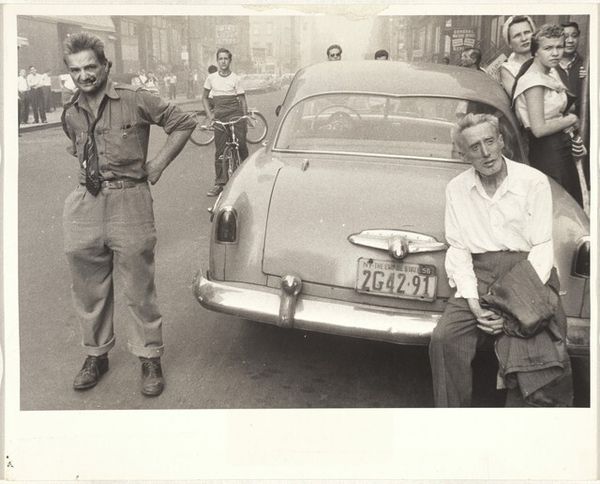
Man on street with balloons--Yale University, New Haven, Connecticut 1956
0:00
0:00
print, photography, gelatin-silver-print
#
print photography
# print
#
landscape
#
street-photography
#
photography
#
gelatin-silver-print
#
cityscape
#
modernism
#
realism
Dimensions: sheet: 20.3 x 25.3 cm (8 x 9 15/16 in.)
Copyright: National Gallery of Art: CC0 1.0
Editor: Here we have Robert Frank’s gelatin silver print, "Man on street with balloons--Yale University, New Haven, Connecticut," from 1956. It's a black and white street scene, and I’m immediately drawn to the contrast between the figure, somewhat solitary with his massive bunch of balloons, and the rather stately, almost official looking cars parked in neat rows. What catches your eye when you look at this piece? Curator: I'm immediately struck by how Frank uses this seemingly simple street scene to capture a specific moment in American cultural history. Consider the social context: post-war prosperity, the rise of consumerism, and a growing sense of unease beneath the surface of that idealized vision. The balloons, these symbols of celebration and carefree joy, are juxtaposed against the man's posture and the formality of Yale’s architecture and those gleaming cars. Do you see any irony there? Editor: Yes, definitely. It feels almost staged, like a publicity shot that’s gone slightly off-kilter. The man's almost melancholic stance contrasts sharply with the supposed joy the balloons represent. Curator: Exactly. Frank was very interested in challenging established norms, especially in photography. His work often depicted a grittier, less romanticized view of American life than what was being presented by mainstream media at the time. This image plays into that tension. Consider how the institution, Yale, provides the backdrop, almost imposing itself upon the scene. What does the "street" in the title mean in that respect? Editor: Hmm… it suggests a space where different elements of society converge, maybe even clash. You have this high-brow university right next to the everyday reality of someone selling balloons. Curator: Precisely. The photograph makes us question what "public" space really means, and who has access to it. Are the balloons an invitation, or a carefully constructed symbol? And how does the context of Yale as an institution shape that very question? Editor: I see it differently now, not just as a snapshot, but a commentary on post-war American society. Curator: Agreed. Frank’s lens captured more than just a man with balloons; he documented a nuanced moment of cultural transition and social tension.
Comments
No comments
Be the first to comment and join the conversation on the ultimate creative platform.
